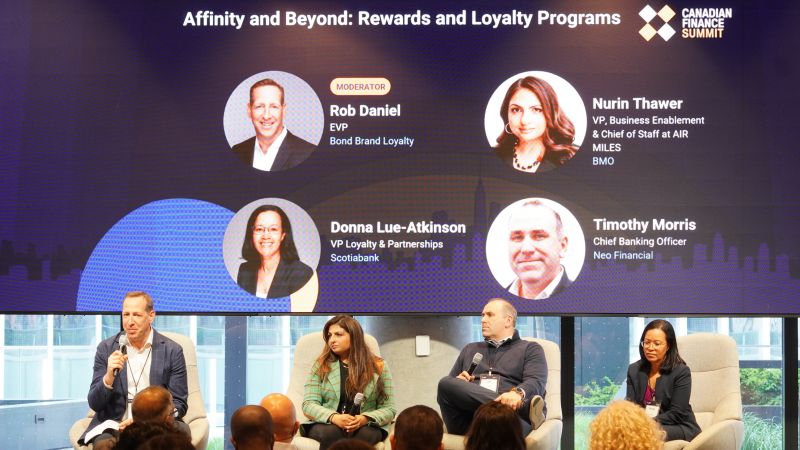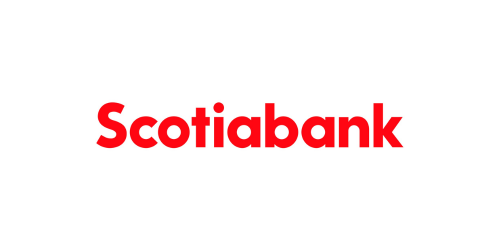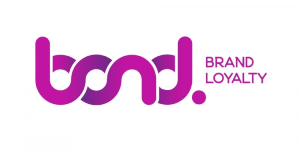Affinity and Beyond: Rewards and Loyalty Programs
Abstract: This panel discussion, led by Rob Daniel from Bond Brand Loyalty, explored the state of loyalty programs in Canada’s financial sector, particularly their effectiveness, challenges, and future potential. Panelists from Air Miles, NEO Financial, and Scotiabank agreed that while loyalty programs remain a powerful driver of customer engagement and credit card choice, many programs are beginning to blend into a “sea of sameness” with similar structures and offerings. Despite this, they emphasized that these programs continue to generate significant economic value and meet key performance metrics. The discussion also examined the structural and technological challenges preventing loyalty from extending beyond credit cards into broader banking products like mortgages and checking accounts. Panelists called for more innovation, customer-centric ecosystems, and a shift in consumer expectations to drive future change—highlighting that loyalty, while emotionally resonant, must become a more integrated part of customers’ financial health strategies.



Rob Daniel: When we ask people about things like their likelihood to continue doing business, their likelihood to modify the brands they work with, their likelihood to spend more, and then of course, the famous likelihood to recommend in all cases when they are satisfied and engaged with their credit card loyalty program or with a merchant loyalty program, the responses to those four answers are very high. So programs are doing what they’re intended to do and they’re highly Effective. Now, of course, when you open with something like that, there’s a big but. And the but is that while we are members in Canada, we run a global study of consumer attitudes and behaviors and credit card loyalty programs around the world.
While we are members of some 16 or 17 credit card and merchant loyalty programs, at any given time, we are only active and engaged in about half of those. And, and that would be a very loose definition of active and engaged. Second is we are hearing increasingly from issuers and from merchants that this is becoming a difficult game to play primarily because the expectations continue to rise, and expectations not just for customer experiences and engagement, which might be a little bit more affordable, but specifically for that valued point and currency. And then finally, which will bring me to my first question is we seem to exist in a sea of sameness where program after program is launched with a very similar construct and very similar offerings.
And increasingly, you know, I used to get asked a lot at cocktail parties, what’s the best credit card out there? I find I’m asked from a loyalty perspective. I find people are asking me that less and less primarily because of this sea of sameness. Don, I’m going to start with you. Talk a little bit about what that’s like as one of the operators of a major Canadian program and some of your perspectives on that.
Donna Lue-Atkinson: In terms of the sea of sameness, as a person who’s been involved in loyalty programs in Canada for quite some time, I wouldn’t disagree with you. I would say yes. And the question that I would ask is that really a bad thing? And I think for the largest programs out there in the Canadian industry, it’s not necessarily a bad thing. So why is that? Well, the very large programs in the Canadian marketplace are generating in excess of over a billion dollars of economic value for their members every single year. And in Canada, that’s a significant amount of economic value, quite frankly. So if you look at it from the consumer standpoint, members, these programs have a strong offerings that members value.
The rational value in terms of what’s offered in this program is very strong as well as if you look at engagement from the standpoint of the ultimate usage of those points over the lifetime of the program, it’s at an all time high. So that’s the consumer. If you look at from the loyalty program operator standpoint, KPIs are being met. They’re seeing share of wallet metrics, consolidation of spend and attrition is really low. When you look at those factors and you combine that with the Canadian consumer with a great deal of inertia, then I would argue the catalyst for innovation is just not there. We can talk about what would break that, but that would be my initial thoughts to you.
Rob Daniel: Interesting. The main response is hey look, it’s working and it’s working for all of us brands and consumers together. And as a result there hasn’t been that driving mother of invention. Right. The driving need that creates the invention.
Donna Lue-Atkinson: Also the consumers are not to the extent that you’ve said expectations are at all time high. Consumers are really not activating on having anything different to a large extent.
Rob Daniel: Okay, Nareen, I’m going to go to you next. Tim, we’re going to after the big banks. I’m expecting you to really step in here and impressed. Do you agree with Donna? Are you on the same page? Maybe the sea of sameness isn’t quite the challenge that I set up front.
Nurin Thawer: I think in terms of bank loyalty programs there is some sea of sameness. Air Miles is in a unique place because were a standalone loyalty program for 30 plus years and now have the pleasure to work with a big bank. From an airmass perspective, we see the value to Canadians in terms of loyalty at an all time high. Folks are struggling and they’re looking for ways to improve their day to day lives and get small rewards all the time. So we do see a change from interest maybe in travel to more e vouchers. I think loyalty definitely has a space. I think that bank programs in general do have a bit of sameness but they’re valuable right now I’m interested to hear about how NIO is bringing new innovation to the market. But yeah, I think I would agree.
Rob Daniel: Tim, you obviously are in a space that needs to differentiate from the big banks. Tell us a little bit more about how you might stand out in this sea of sameness and if it’s even a problem for you.
Timothy Morris: Yeah, it’s interesting when you ask the question, I kind of think of it two ways. One, you’re asking about the sea of sameness, maybe in the context of what you just said. How do you actually compete and stand out? And then the other side of it is I think more of an implication that maybe it’s not benefiting everyone to the degree that we think it is. So on the first part, a little bit background in terms of NEO and the take that we’ve got on this, NEO was really founded on an opportunity that our group saw to put some more agency back in the hands of merchants and customers.
And it was the fact that they’re not participating in a lot of the rewards that are out there and the programs that are very well known to us in terms of the status quo and how we’re set up and structured in Canada. But we couldn’t just out of the gates as a fintech, just pile a bunch of dollars behind a rewards program and make it work. We did innovate to give ourselves the ability to give back to the people who are participating in it. And so NEO effectively used technology and innovating on the middleware side of things. So for those who are familiar with the cards world, there’s this big chunk of money that gets spent every year, hundreds of millions of dollars by the big banks on processing those transactions. NEO effectively built that themselves.
And what that did was it gave us the agency and be able to put that money back into the reward program that we knew customers would value. And so innovation was a way to unlock value and to drive what we see as a category winning program around some of our credit cards. But back to the second point around, is it benefiting everybody? I think about this, it goes back to the competition point that Donna raised. When you’ve got six financial institutions that represent 93% of the market cap, 95% of assets, a billion dollars in value is relatively small that we’re giving back to individuals. And that’s just, it’s just a, it’s a competitive element. It’s not a particular institution’s challenge or issue, but it’s the reality that there’s no incentive. And the programs are probably working really well for financial institutions.
But as a Canadian, if I’m only getting maybe 1% cash back on the groceries or the money I’m spending through a cards program only, are you actually getting value for the loyalty that you’re driving to a financial institution? I think Canadians deserve more. I think they want more, I think they’re going to expect more. So when you think about it, why is it limited to cards for the most part? Why isn’t a debit card, why isn’t it a checking account? Well, the FIs who run the programs don’t make money on those the way you do on a credit card. So it’s hard to like make it work for the customer. But what if you extended into the biggest financial decisions that a customer is making in their lives, into their mortgage, into their investments?
I think that’s the opportunity going forward to drive more value for customers. And so when I come back to your question, hey, is There CSA ness. How do you differentiate? Well, maybe we tap into actually broadening that for customers. And so I think, you know, kind of two parts to it. You can innovate, use that as a source of or use competition as a source of innovation to give back and then really drive more into the hands of Canadians because then they’ll become very loyal.
Nurin Thawer: Can I just build something also? If you think about the customer as a banking customer, one customer as opposed to a credit card customer, there’s so much more that a bank can do in terms of extending loyalty to a checking account, to a savings account, to other products and services that we rely on our banks for. I think that is another way to look at the value proposition for a collector or customer that we haven’t really seen yet.
Rob Daniel: So this is a good line of discussion. The loyalty business of capturing our data and rewarding people for the right behaviors. The do this, get that model that many banks are a part of was born out of the credit card space, was born out of technology and ecosystems inside the credit card space and was largely afforded by interchange rates and that fee structure. Many elements of the bank crave the same kind of predictable programming and loyalty solutioning or at least components of it. Why hasn’t it grown to the rest of the bank? Why haven’t those solutions kind of grown into the rest of the bank at the same pace that it grew inside credit cards? I can tell you I’ve been around enterprise loyalty type conversations for a long time.
Donna Scotia famously has made one of the more bold marketing claims around bank of Rewards. Talk to us a little bit about what are the benefits and what are some of the challenges of it.
Donna Lue-Atkinson: I’m just going to build up what Nirin said because I think it’s quite simplistic and I won’t necessarily speak from a Scotiabank standpoint, but Rob, you mentioned that these large scale loyalty programs are traditionally and still today born out of the fact that the margin profile of a credit running a credit card P and L supports being able to drive rich rewards into the hands of customers. And I think if when you start extending to other financial products they do not have that margin profile. So I think where Nuram was going is you really have to look at it seems so super simple and intuitive the value of that client and for a large part in the financial industry, I’ll just talk about that. Companies haven’t gotten there yet, quite frankly. And so there is white space should you be able to get there.
And it’s not Challenging. It just requires breaking down silos on how we in the financial industry like to carve up different products and are held accountable for profitability.
Nurin Thawer: Yeah, just to build on that. So I’m new to the world of banking. Hermes has been part of BMO for about two years now. And you know, each product line, each area of the business has their own P and L quarter end. We roll up and we see how it all comes together. You know, the idea of one customer, one client, we’re really into that at bmo, but we have a long way to go. And you know, from a loyalty perspective, getting a collector to choose your credit card versus someone else to make a payment, it’s a fairly small decision. And yeah, one reward is better than the other. They’ll choose that one. Moving the needle on where you choose to get your mortgage. These are big financial decisions, probably the biggest in your day to day life.
Some points are not going to help you make that decision. What you need is an ecosystem to be part of. And if a bank looked at that, you know, through a holistic perspective, that ecosystem, the value of that customer would be so engaging that you would be able to do a lot more.
Rob Daniel: Has air miles strengthened BMO’s ability to do this at a enterprise level as opposed to at a card level? I see you looking right at your boss. Look at me. I’m just a tool for us.
Nurin Thawer: Not my boss, my peers. I think we’re on a journey. Air Miles and bmo. As I said, it’s been two years and it takes a long time to make change in this industry. We’re able to share data more now and create a better picture of our customer. So I think we’re on our way. Are we there yet? Completely. No. But that was the proposition in terms of BMO acquiring airmouse. Tim?
Timothy Morris: Yeah, I want to jump in because dirty secret I have to admit out here. If anyone looks at my LinkedIn profile, I worked at a big bank, I also worked at a digital bank and now I work at a fintech. And the experience I had was that some more forward looking FIs like Escotia actually have a Donna, which is huge. There’s a differentiator and I think that has the potential to drive change. The underlying infrastructure challenges, and Don could speak way better about this than I can, is on the technology side, if you’re going to introduce a program that has rewards, has points, the credit card ecosystem is there. Like it’s easy and it doesn’t take the same level of effort or Lift that. Otherwise you really need to be motivated to change. Right? Like, you really have to be driven to do that.
And that is where I’m going to come back to the competitive element around. If we’re driving more competition, there will be more change in this space. And Hannah from wealthsimple this morning alluded to it. I’m not going to, I’m not making this up, by the way. This, I’m not breaking news, but she referenced the checking account, referenced people getting more and creating wealth out of their checking account. I think that was a direct consideration to some of that infrastructure, some of the costs, some of the P and L decisions that the banks face, which is hard. It’s very hard. So technology is a huge differentiator. Momentum is a huge differentiator, as is competition. Like, I think if there’s more competition.
Donna Lue-Atkinson: We’ll see that change just to build off of Tim and go someplace different. Because I agree on what you’re saying, but I think a lot of what needs to change, quite frankly, is consumer expectations. So I think as much as you say they’re getting higher, consumers are really not changing their expectations. And I’ll tell you what I mean by that. If you look at the value of the currency sitting on people’s sitting in member accounts, I think the consumer mindset loyalty programs are extremely emotional and not at all rational, which people find hard to believe. And they think about their points. And as something over there driven by consumerism and appetite, I’m going to treat myself, which is great.
But if you look at actually the value that’s locked into these programs, consumers should be thinking about, how is this part of my financial picture? And I think Tim was going there originally and how, I mean, we could be talking about thousands of dollars a year. In an economy like this, can you afford to say, hey, my $5,000 a year or over two years I’ve been able to generate, I’m going to keep it over here as my slush run, right? How are we thinking about the financial health, the investment component, the paying down debt component? But guess what? Consumers are emotional and they’re keeping that value over here. And until consumers start demanding that these programs give access to more ways to be part of their financial picture, there’s really no catalyst for these programs to change.
Timothy Morris: And I actually, I think, you know, with a credit card, as a consumer, you also feel you have the agency and go get a different card. You can make a choice in a rewards program, whatever it is, with a mortgage, I think it’s also more of a oh, the bank holds all the cards. Where’s my ability to negotiate with the bank? Where’s my ability to be able to demand more on that? And so it is very much an emotional, but it’s also a mindset consideration that doesn’t change very quickly for Canadians. And it’s a big challenge for us.
Nurin Thawer: I just wanted to build on Donna’s point about the bank that consumers are holding with their points. We see it a little differently. So at air miles this year, one of the things we’ve noticed is as a result of the economy, no surprise here, collectors are looking for a lot more flexibility in demanding it. So we launched a newer feature allowing collectors to transfer balances from dream, which is for travel, to cash. And we’ve seen a big uptick in the interest in this feature because folks are looking for flexibility to be able to use their repository for rewards right now, including for e vouchers for cash, for merch that they could benefit from as opposed to maybe saving those points for travel. Not everyone works like that anymore because we’re traveling less.
We’re traveling less to the US and looking for rewards now that are going to make a difference in this month’s expenses.
Rob Daniel: I think, alignment that there is still tremendous opportunity to evolve and innovate in this space. It intersects with so many of the conversations that are had inside this room. I appreciate you having us, Gary.
Here are 10 key insights from the panel:
-
Loyalty Programs Work—But Engagement Lags: While Canadians belong to 16–17 loyalty programs, they are truly active in only about half—revealing a significant gap between enrollment and real engagement.
-
Sea of Sameness Is Real: Despite their effectiveness, most programs look and feel the same, leading to consumer indifference. There’s little perceived differentiation among offerings, particularly among traditional banks.
-
Big Programs, Big Inertia: Major loyalty programs generate over $1 billion in value annually and meet core KPIs, creating little incentive for incumbents to innovate due to strong performance and consumer inertia.
-
Fintechs Use Infrastructure to Unlock Value: NEO differentiates by rebuilding the tech stack (e.g., processing infrastructure), redirecting those savings back into rewards and creating more merchant and customer value.
-
Credit Cards Dominate Due to Profitability: Rich rewards are only sustainable in credit card programs because of their favorable margin profiles—checking and mortgage products lack the same economics.
-
Banks Struggle with Siloed Systems: The internal structure of banks—separate P&Ls for each product line—hinders cross-product loyalty strategies and the ability to treat customers holistically.
-
Consumers Want Flexibility: Air Miles’ new feature allowing conversion from travel (Dream) points to cash has seen strong uptake, reflecting a shift in consumer priorities from aspirational to practical rewards.
-
Loyalty as Financial Wellness: There’s an opportunity to reposition loyalty points from indulgent “extras” to part of a customer’s financial toolkit—helping pay down debt or boost savings—but consumer mindsets haven’t shifted yet.
-
Real Change Requires Competition: True innovation in loyalty is more likely to come from fintechs and challengers. Incumbents are unlikely to evolve quickly without external pressure and heightened consumer expectations.
-
Consumer Empowerment Is Lagging: Canadians feel more agency over their credit card choices than over mortgages or broader financial relationships. Shifting this mindset is essential to expanding loyalty beyond cards.
Sign up for the CLA Finance Summit Series






